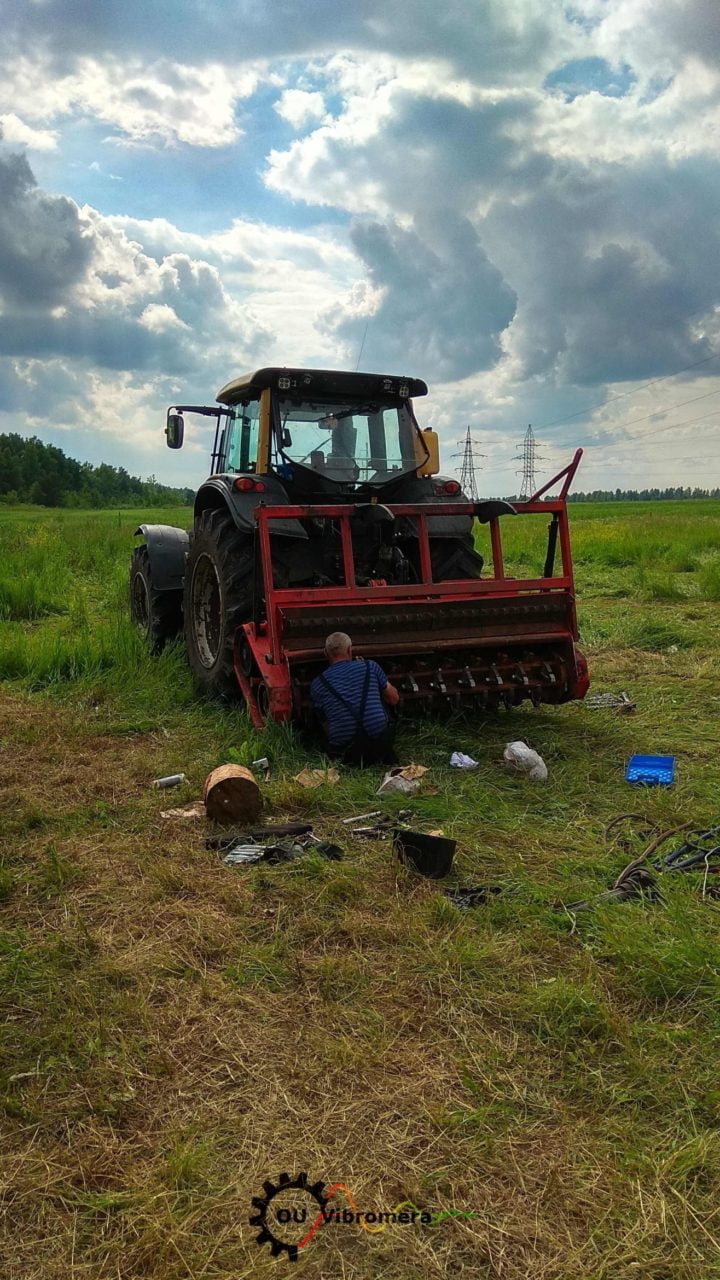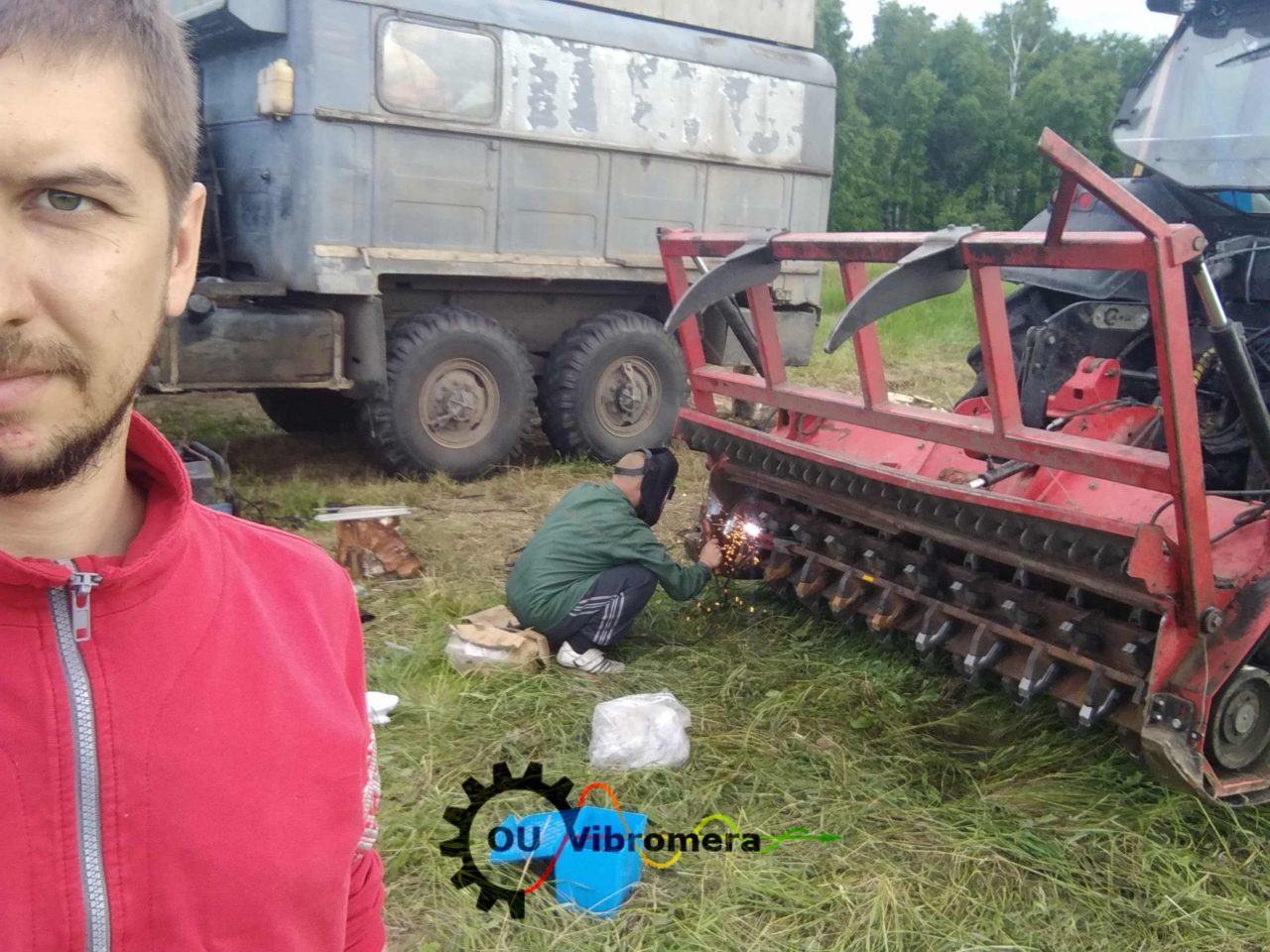AWHI mulchers are extensively used for clearing forested areas, removing undergrowth, and processing wood waste. To ensure optimal operation and longevity of these machines, the mulcher's rotor must be balanced. This article explores the dynamic balancing process of an AHWI mulcher rotor using the Balanset-1A device.
Balancing Process
Due to high initial vibration, the first balance was conducted at a minimal rotation speed.
- - Initial vibration measurement: Using Balanset-1A, the initial vibration level of the rotor was measured, exceeding 100 mm/sec, making operation at working speed impossible.
- - Placement of known mass weights: Weights were placed on both sides of the rotor, allowing Balanset-1A to measure the change in vibration caused by these weights.
- - Calculation of optimal balancing: The device then calculated the weight of the loads and the angle of their installation to achieve optimal balance.
Balancing at Working Speed
After achieving balance, the rotor was accelerated to working speed, and the process was repeated for precise balancing.
Benefits of Balancing
Dynamic balancing of the AHWI mulcher rotor with Balanset-1A offers several advantages:
- - Noise Reduction: Significant decrease in operational noise.
- - Increased Longevity: Extended lifespan of bearings.
- - Enhanced Efficiency: Reduced fuel consumption.
- - Improved Reliability: Lower likelihood of breakdowns and enhanced machine reliability.
Results
Dynamic balancing of the AHWI mulcher rotor with Balanset-1A was highly successful. The initial vibration level significantly exceeded 100 mm/sec, which hindered achieving working speed. However, through meticulous and sequential balancing at minimal and working speeds, vibration was reduced to 0.5-1 mm/sec. The benefits extend beyond noise and fuel consumption reduction to also include prolonged lifespan of machine components.
Dynamic rotor balancing in AHWI mulchers is a critical factor affecting the machine's performance, durability, and reliability. Using the Balanset-1A ensures optimal rotor balance, leading to significant improvements in operational characteristics of the mulcher.
For further information on rotor balancing and its critical role in various industrial applications, explore more at our FAQ or learn about specific case studies in the centrifuge balancing in industrial operations.

